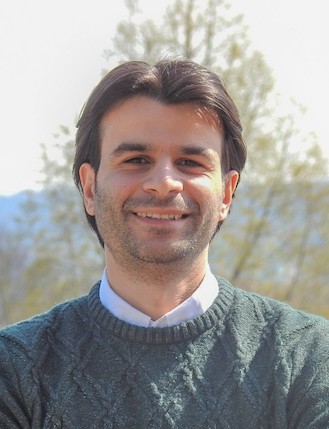Vita
Curriculum vitae
Since March 2021
Group Leader for Biosensors at the chair for Electrobiotechnology, TUM Campus Straubing.
2021 – 2023
Scientific PI of the Forschungstransfer EXIST Projekt “LiveSen” at Ruhr-Universität Bochum: led scientific activities for developing and scaling up a nitrate biosensor for fertilizer adjustment.
2018 – 2021
Postdoctoral researcher at the Faculty for Chemistry and Biochemistry at Ruhr-Universität Bochum: Led a project on making hydrogenases more robust for applications in energy conversion.
2018 – 2019
Postdoctoral researcher at the Hydrogen and Biofuel Center GmbH in Duisburg, Germany: Worked in an industry-oriented R&D team for developing Li-ion batteries and fuel cells.
2017
PhD in Chemistry at the Max Planck Institute for Chemical Energy Conversion in Mülheim, Germany: Conducted research on protective matrices for enzymes and bio-inspired catalysts for technological application under the supervision of Prof. Dr. Wolfgang Lubitz.
2013 – 2017
PhD Researcher at the Max Planck Institute for Chemical Energy Conversion in Mülheim, Germany: Developed matrices for wiring (bio-) catalysts to electrodes while protecting them from deactivation.
2013
Master of Science in Chemistry from Ruhr-Universität Bochum, Germany: Conducted research on synthesizing viologen-polymers for contacting hydrogenase to biofuel cell anodes under the supervision of Prof. Dr. Wolfgang Schuhmann.
2011 – 2013
Research assistant at the Centre for Electrochemical Sciences in Bochum, Germany: Worked on the synthesis of redox-active polymers and analyzing their electrochemical properties and possible interactions with biomolecules.
2008
Bachelor of Science in Applied Chemistry from Damascus University, Syria.
Selected Publications
- A. Oughli*, S. Hardt, O. Rüdiger, J. A. Birrell* and N. Plumeré*. Reactivation of Sulfide-protected [FeFe] Hydrogenase in a Redox-active Hydrogel. Chemical Communications 2020, 56 (69), 9958-9961. https://doi.org/10.1039/D0CC03155K
- Li, U. Münchberg, A. A Oughli, D. Buesen, W. Lubitz, E. Freier, N. Plumeré*. Suppressing H2O2 Generation to Achieve O2-Insensitivity of a [NiFe] hydrogenase in Redox Active Films. Nature Communications, 2020, 11 (1), 1-7. https://doi.org/10.1038/s41467-020-14673-7
- A. Oughli, A. Ruff, N. Priyadarshani Boralugodage, P. Rodríguez-Maciá, N. Plumeré, W. Lubitz, W. J. Shaw,* W. Schuhmann* and O. Rüdiger*,Dual properties of a hydrogen oxidation Ni-catalyst entrapped within a polymer promote self-defense against oxygen. Nature Communications, 2018, 9, 864. https://doi.org/10.1038/s41467-018-03011-7
- A. Oughli, F. Conzuelo, M. Winkler, T. Happe, W. Lubitz, W. Schuhmann, O. Rüdiger*, N. Plumeré*. Protection from oxidative damage of the O2 sensitive [FeFe]-hydrogenase from Chlamydomonas reinhardtii using a redox hydrogel. Angew. Chem. Int. Ed., 2015, 54, 12329 –12333. 10.1002/anie.201502776
- Oughli, M. Velez, J. A Birrell, W. Schuhmann, W. Lubitz, N. Plumeré*, O. Ruediger*. Viologen-modified Electrodes for Protection of Hydrogenases from High Potential Inactivation while Performing H2 Oxidation at Low Overpotential. Dalton Trans., 2018, 47, 10685-10691. https://doi.org/10.1039/C8DT00955D
- Plumeré, O. Rüdiger, A. A. Oughli, R. Williams, J. Vivekananthan, S. Pöller, W. Schuhmann*, W. Lubitz*. A redox hydrogel protects hydrogenase from high potential deactivation and oxygen damage. Nature Chemistry, 2014, 6, 822–827. https://doi.org/10.1038/nchem.2022

